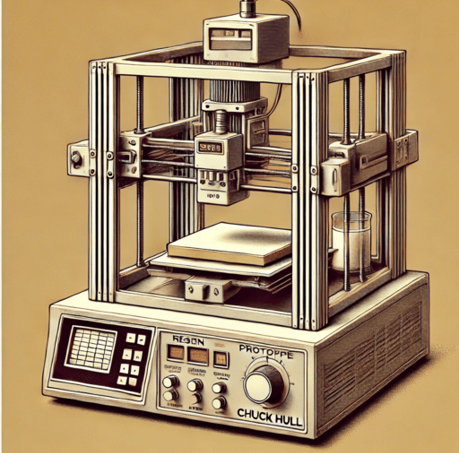3D printing, or additive manufacturing, has evolved significantly since its inception in the 1980s. The technology allows objects to be created layer by layer from digital designs, revolutionizing industries from prototyping to healthcare and aerospace.
The origins of 3D printing trace back to Chuck Hull, an American engineer who invented stereolithography (SLA) in 1983. Hull developed the process while working at a company that used UV light to harden coatings on furniture. He realized that a similar approach could be used to build three-dimensional objects by curing liquid resin layer by layer.
In 1986, Hull patented stereolithography and founded 3D Systems, which became one of the leading 3D printing companies.
Several breakthroughs have contributed to the growth of 3D printing:
1980s: Stereolithography (SLA) and Patent Wars
SLA was the first 3D printing method, using UV lasers to cure liquid resin.
Soon after, Selective Laser Sintering (SLS) and Fused Deposition Modeling (FDM) were developed, laying the foundation for the industry.
1990s: Commercialization and New Materials
Stratasys commercialized Fused Deposition Modeling (FDM), a more affordable method using melted plastic filament.
EOS introduced industrial Selective Laser Sintering (SLS), enabling printing with metal and polymer powders.
2000s: Open-Source Movement & Consumer 3D Printing
The RepRap Project (2005) pioneered open-source, self-replicating 3D printers, making desktop printing affordable.
MakerBot (2009) brought 3D printing to hobbyists and small businesses.
2010s: Industrial Adoption & Bioprinting
Companies like GE, Boeing, and Adidas began using 3D printing for manufacturing.
Advances in bioprinting allowed researchers to print human tissues and organs for medical applications.
Metal 3D printing became more widespread, used in aerospace and automotive industries.
2020s: Large-Scale Printing & Customization
Construction 3D printing enabled houses and buildings to be printed with concrete.
Food printing and personalized medicine (custom prosthetics, dental implants) grew rapidly.
Advances in AI and automation made 3D printing more efficient and cost-effective.
The global 3D printing market has expanded rapidly:
In 2024, it was valued at ~$20 billion.
By 2030, it's expected to surpass $80 billion, driven by demand in manufacturing, healthcare, and aerospace.
The key growth areas include metal printing, bioprinting, and mass customization.


